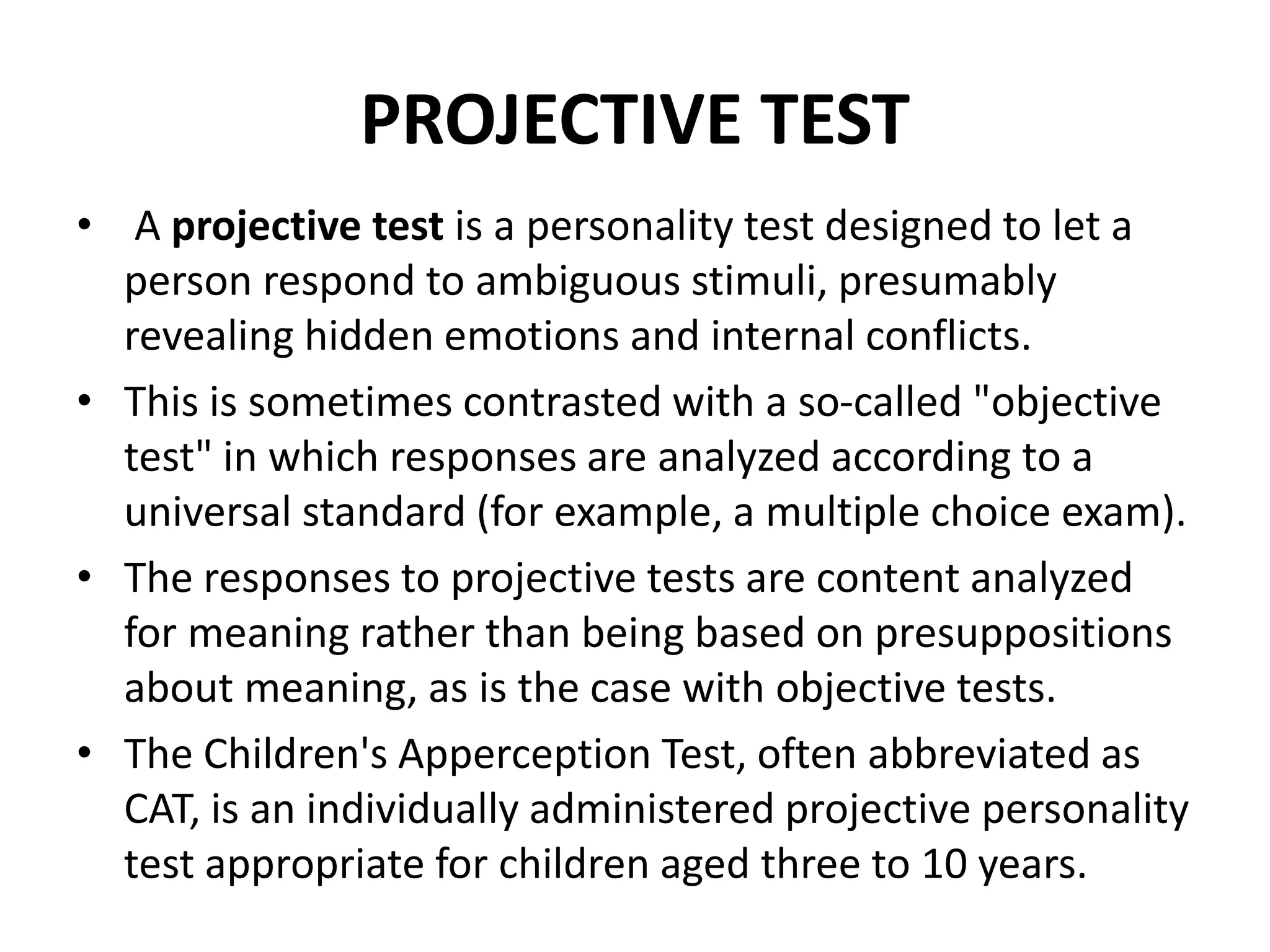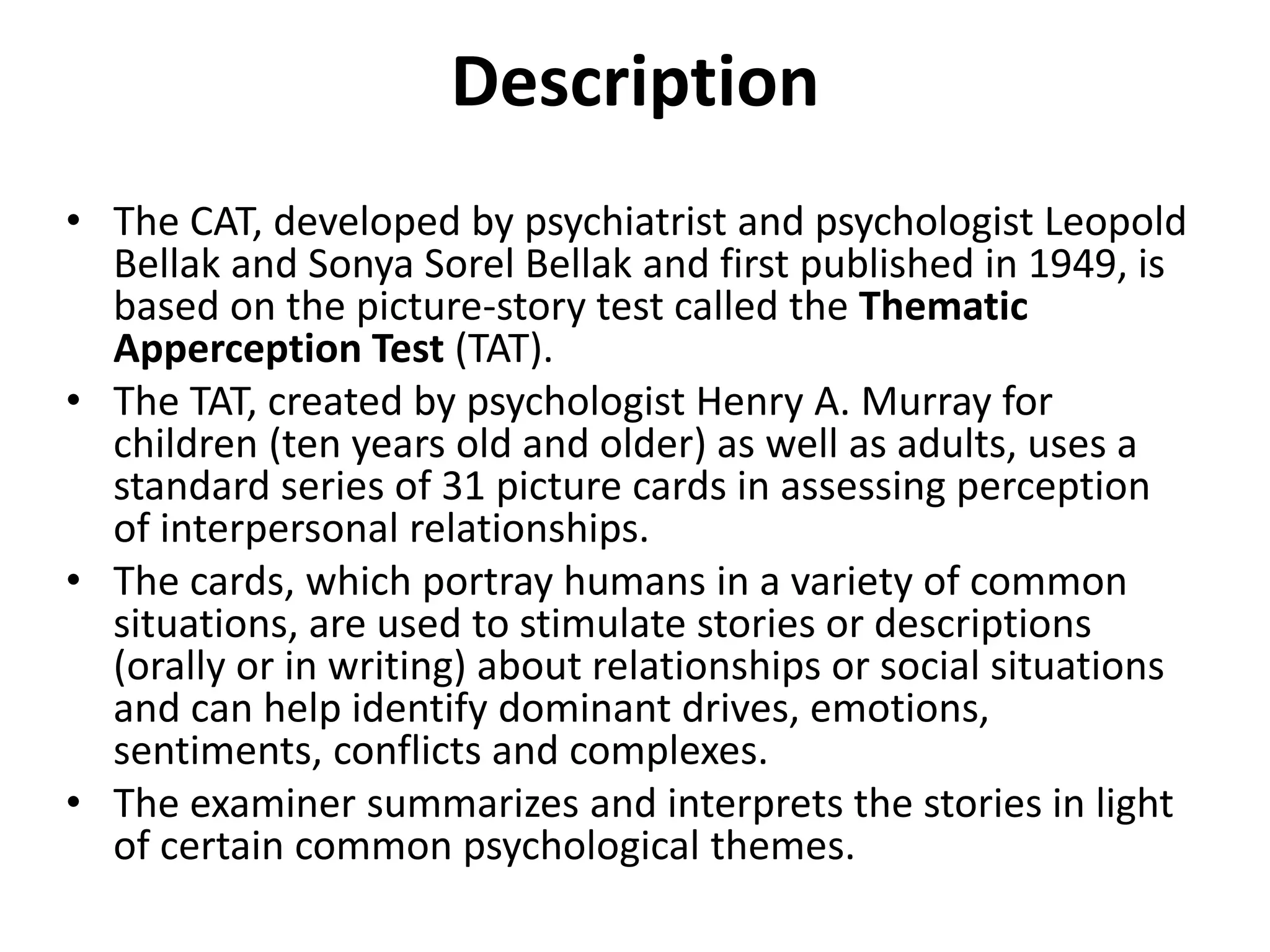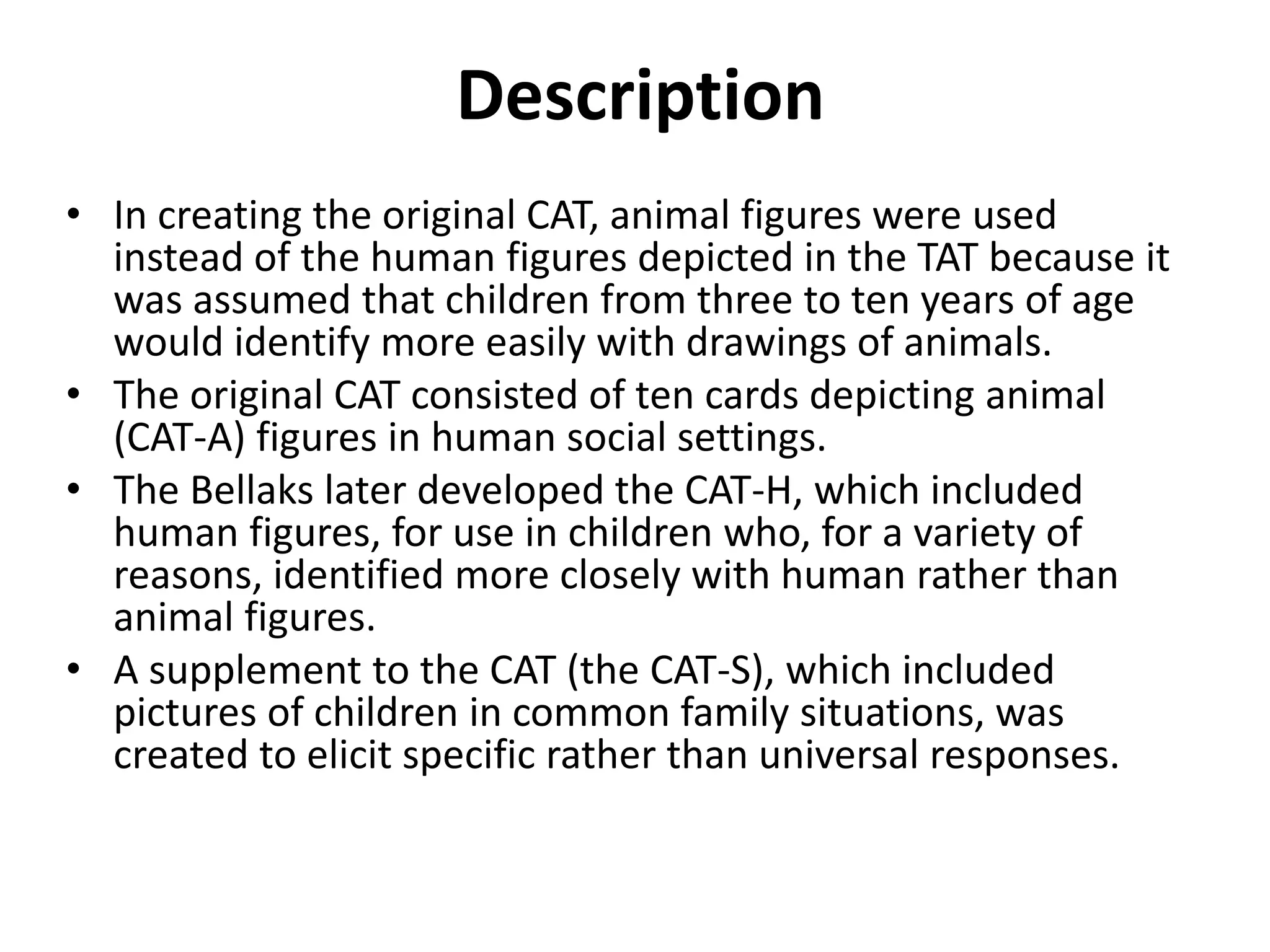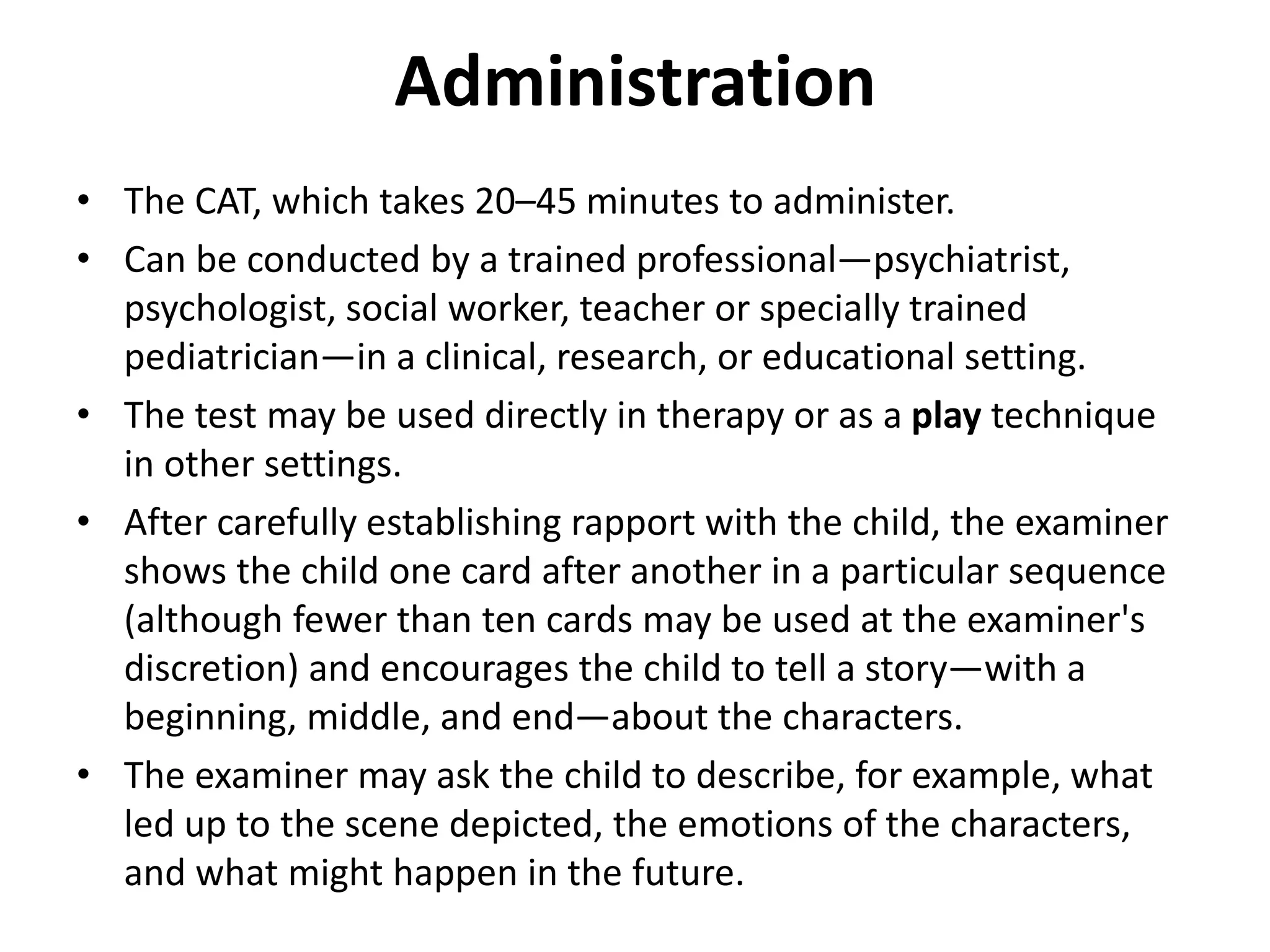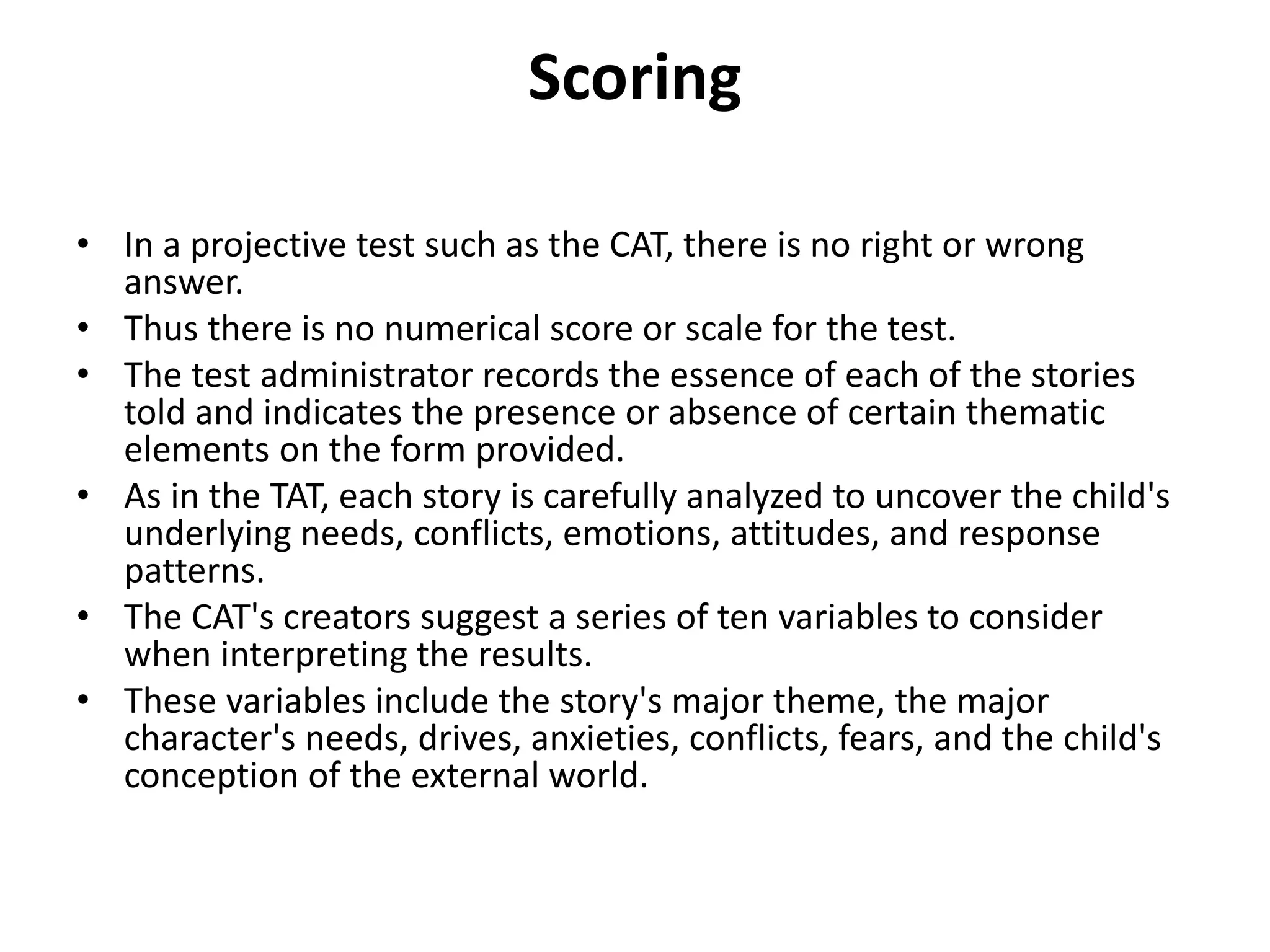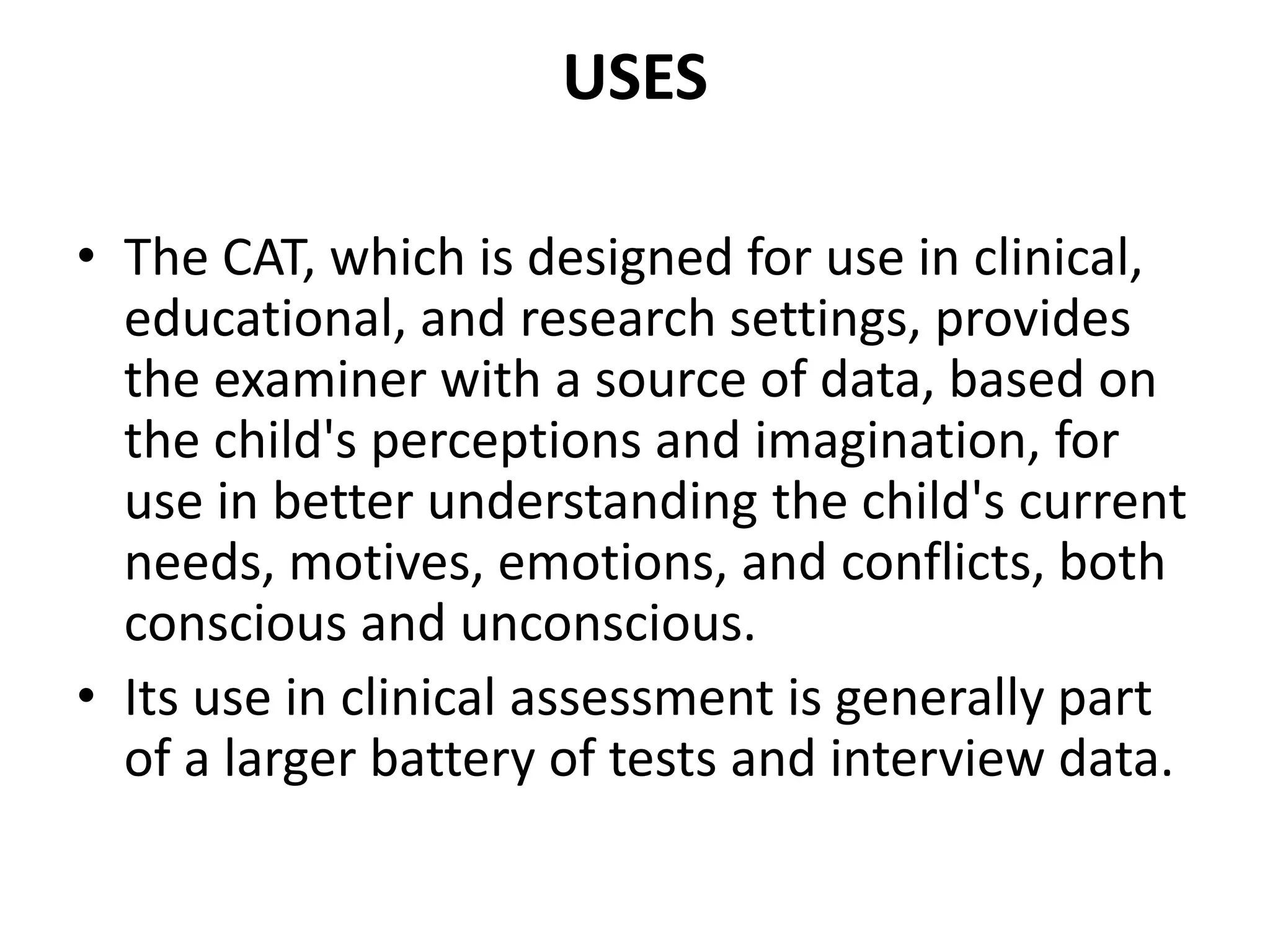The Children's Apperception Test (CAT) is a projective personality test for children ages 3-10 that involves showing them a series of picture cards depicting animals or people in familiar situations. The child's stories in response are analyzed to understand their personality, maturity level, and psychological health. Specifically, the CAT aims to reveal a child's reality testing abilities, drive regulation, defenses, conflicts, and autonomy. It was developed based on the Thematic Apperception Test for adults and older children, but uses animal figures instead of humans. The CAT takes 20-45 minutes to administer by a trained professional and involves encouraging children to tell stories about what is happening in each card and what might occur. There are no right or

